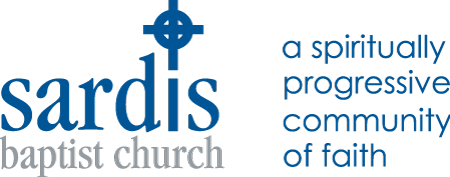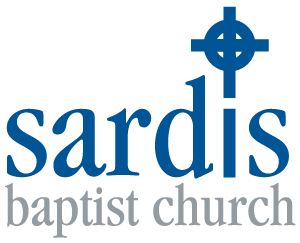Boosting Hope
BOOSTING HOPE
John 20:19-31
Rev. Tillie Duncan
Sardis Baptist Church
April 27, 2025
Two weeks have passed since Palm Sunday, and it is now the second Sunday of Easter. Two weeks that have given opportunities to imbibe a shot of hope. This past Tuesday marked the 55th anniversary of Earth Day, a day when we are encouraged to be good stewards of natural resources and are reminded of the promises offered by the cycle of life. The week before Easter we acknowledged and commemorated the last week of the earthly life of Jesus. That week, designated by Christians as Holy Week, is a microcosm of life. Jesus and his disciples experienced everything from the pleading adulation of Palm Sunday to the screaming hatred of good Friday. They shared meals together, eating and drinking with friends, sharing stories. Experienced camaraderie and betrayal. Acted with courage against establishment power and cringed in fear behind closed doors. Stood by in support. They rested; they noticed the natural world about them; they had serious discussions led by Jesus who wanted to prepare them for “what will happen when….” They exulted in hope for the future and despaired of having a future.
The second Sunday of Easter. The liturgical calendar names all the Sundays until Pentecost — Easter Sundays. As Christians, every Sunday is Easter Sunday because resurrection occurred on the first day of the week. Early followers made it a special day of rest and community worship, a day to encourage one another with the hope of resurrection.
Timothy Dolan, an archbishop in New York, a guest on the Morning Show on Easter Monday, averred: “Easter is a booster shot of hope!” Think about it! We can come together every Sunday (and in between) and receive a booster shot of hope.
It’s no longer only a mental exercise of history for us to realize the importance of vaccines and immunizations. We’ve not yet fully recovered from the emotional shock and the societal, economic, political after-effects of the Covid-19 pandemic. In a world of 8 billion people, it is estimated that 760 million people were infected, resulting in the deaths of nearly 7 million.
We can only read about the Black Death in which 50% of the Eurasian population perished. It took two centuries for the population numbers of that 14th century event to recover.
Maybe you have heard talk from grandparents or older friends about the H1N1 influenza epidemic of some 100 years ago when 33% of the population was infected and 2-3% of the population died. Talking genealogy with a friend this past week, she said, “Judson doesn’t know much about his father’s family because his grandparents died from flu in 1918, leaving his father and siblings orphaned.
I remember the polio outbreak in the early 1950’s, well, not really remember, but lived with the outcome. In my little rural community, two of my cousins and a girl from church had lighter cases of the disease and even today have problems with weakened muscles. In one family the son died, and the daughter spent the rest of her life in an iron lung. (An iron lung is a cylindrical contraption in which a polio patient’s atrophied body is encased with only the head outside. There’s a bellows that regulates air pressure, in effect, breathing for the person. Sort of taking the place of the diaphragm, intercostal muscles, abdominal muscles, etc., which, in acute cases of polio, no longer function.)
It is difficult for us to imagine a time in which grief from losing a child or a spouse from measles or whooping cough or typhoid was normal rather than rare. Visit an old cemetery and notice the many children’s graves before the 1950’s. Imagine the grief! Then imagine how hope for a longer and healthier life was given a boost when flu, measles, polio immunizations were developed.
Hope is given a boost when we remember and celebrate resurrection.
Often hope is elusive or non-existent. As it was for those early followers of Jesus. Their hope died with the execution of Jesus. They could not fathom functioning without him. Their trust in him had evaporated. The men were hiding out for fear that they, too, would be unjustly tried and condemned. The women were gathering the necessary elements to prepare his body for burial. Jesus was dead, and dead is dead! Nothing in their experience prepared them for Easter morning.
At my parents’ 50th wedding anniversary celebration in Shelby, I was standing in the receiving line with them. A woman approached who looked like Aunt Beatrice. Aunt Beatrice lived in New Mexico, and I had heard nothing about her paying a visit to NC. I was totally confused. Which one of my aunt’s sisters is this? One I’m not familiar with? Seeing my face, she said, “You don’t know who I am, do you?” Well, no! She couldn’t possibly be who she looked like because that person was in New Mexico!
Now, believing that a person is in another place is nothing compared to knowing a person is dead!
Thus, when Mary Magdalene saw Jesus outside the tomb, she thought he was the gardener until he spoke her name. The men walking to Emmaus thought he was a stranger in town who was not up on current events until he broke bread with them. The disciples mentioned in John didn’t believe either Mary or the Emmaus men. Until they saw for themselves. Jesus appeared in their midst and greeted them with Shalom, peace be with you. A traditional greeting with an untraditional meaning. It was more than. More than a wish for the absence of conflict, more than the anti-nuclear weapons symbol. It was peace which wished wholeness and well-being for the person greeted. The followers remembered earlier times when Jesus wished them peace. It was a characteristic trait of Jesus to want his friends to experience peace, that is, well-being.
He offered peace repeatedly. A dramatic account of his offering peace is in the report of a fearful storm experienced by his disciples on the Sea of Galilee. Jesus stilled not only the waves overwhelming the boat, but the emotional storms of fear overwhelming the disciples.
Jessus invited them to notice the wounds he bore from the cross. The invitation was not only to Thomas on his second appearance in the closed room, but to all of them on his first appearance when Thomas was absent. He recognized that these people needed assurance that he was who he said he was. That he was not a ghost, but a present reality.
Jesus challenged them, “As God sent me, so I send you.” Go out and make a difference in the world. Be the kind of messenger for God that I have been.
In my opinion, Pope Francis came as close as anyone to obeying that dictum. His own dictums had to do with economic justice, with liberating from oppression, with environmental integrity, with acceptance of the marginal. “Being homosexual is not a crime,” he said. He included women in decision making. He challenged the strident rhetoric against migrants and encouraged a welcoming stance. Maybe he didn’t go far enough toward inciting to heal society’s ills, but baby steps grow into longer strides.
Marianna Borg, the widow of Marcus Borg, has written: “Crucifixion failed to liquidate and obliterate Jesus. It failed to erase him from memory. It failed to silence his followers. There was something about him that proved to be stronger than death. Even death on a cross. And stronger than what some thought was the inevitability of empire.”
Each gathering of Sardis offers a booster shot of hope! And challenges us to become carriers of justice, peace, liberation, acceptance, economic equity, environmental integrity, and that same hope!
Recent Sermons
Easter Sunday 2025
April 20, 2025
Palm Sunday 2025
April 13, 2025
Our Choices
April 06, 2025


